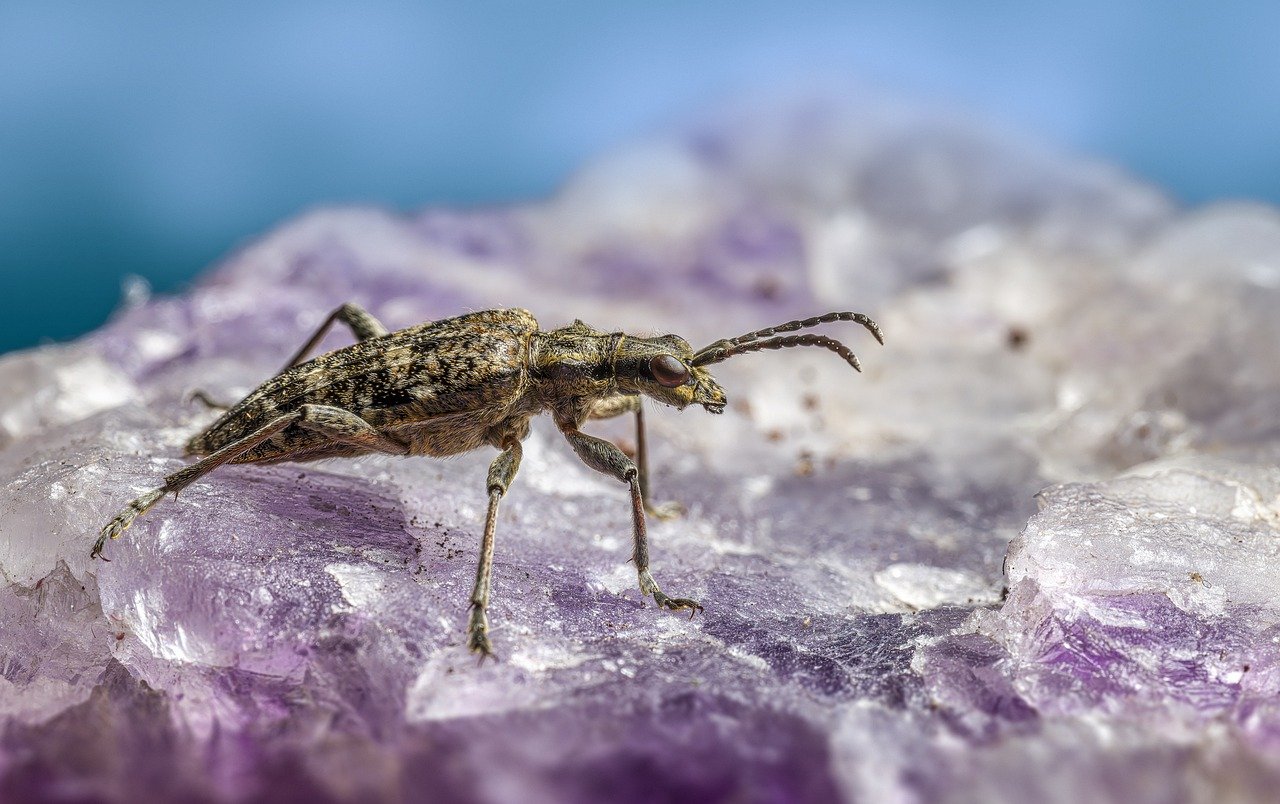The Black-spotted Longhorn Beetle (Rhagium mordax) is a notable species of beetle belonging to the Cerambycidae family, known for its distinctive appearance and behaviors. This beetle is native to various parts of Europe and North America and is recognized for its role in the ecosystem as a decomposer.
Physical Description
- Size: The Black-spotted Longhorn Beetle is a medium-sized beetle, typically measuring between 10 to 16 mm (0.4 to 0.6 inches) in length.
- Coloration: The beetle’s coloration is primarily a mix of black and white or pale yellow. Its elytra (wing covers) are often mottled with black spots or patches, which provide a striking appearance.
- Antennas: One of the most distinctive features of this species is its long, thread-like antennae, which are about 1.5 to 2 times the length of its body. These antennae are characteristic of longhorn beetles and are used for sensing the environment.
- Body Shape: The body is elongated and cylindrical, with a somewhat flattened appearance. The legs are long and slender, adapted for movement through its habitat.
Distribution and Habitat
- Range: Rhagium mordax is found across Europe and parts of North America. It inhabits various forested environments, including deciduous and mixed woodlands.
- Habitat Preferences: It prefers habitats with abundant decaying wood, which provides essential resources for its larval stage. The beetle is often found in old or decaying trees, fallen logs, and stumps.
Behavior and Diet
- Larval Stage: The larvae of the Black-spotted Longhorn Beetle feed on decaying wood. They are wood-borers, meaning they create tunnels within the wood, which helps in breaking down and recycling the organic material. This behavior is crucial for nutrient cycling in forest ecosystems.
- Adult Diet: Adult beetles primarily feed on nectar and pollen from various flowers. They are also known to visit sap flows on trees.
Reproduction and Lifecycle
- Mating: The mating process usually occurs on the surface of logs or trees where the beetles are active. After mating, the female lays eggs in crevices or directly into decaying wood.
- Development: The eggs hatch into larvae, which spend several months to a year developing within the wood. They go through several larval stages before pupating.
- Pupation: Pupation occurs within the wood or in the soil surrounding the decaying wood. After completing the pupal stage, the adult beetles emerge from the wood to continue the life cycle.
Ecological Role
- Decomposition: The Black-spotted Longhorn Beetle plays a significant role in the decomposition of dead wood. By feeding on and tunneling through decaying wood, the larvae contribute to the breakdown of this material and the recycling of nutrients back into the ecosystem.
- Pollination: As adults, these beetles contribute to the pollination of flowers while feeding on nectar and pollen.
Conservation Status
The Black-spotted Longhorn Beetle is not currently listed as threatened or endangered. It is considered to have a stable population across its range. However, like many species, it can be affected by habitat destruction, particularly the loss of old and decaying wood habitats due to logging and land management practices.
Summary
The Black-spotted Longhorn Beetle (Rhagium mordax) is a fascinating insect with a distinctive appearance and important ecological roles. Its larval stage contributes to the decomposition of dead wood, aiding in nutrient recycling, while the adults play a part in pollination. Understanding and preserving its habitat is essential for maintaining the health of forest ecosystems and ensuring the continued presence of this unique beetle species.e in forested habitats highlights the interconnectedness of species within ecosystems and underscores the importance of biodiversity conservation efforts.
Views: 1501
Subscribe to the newsletter:
